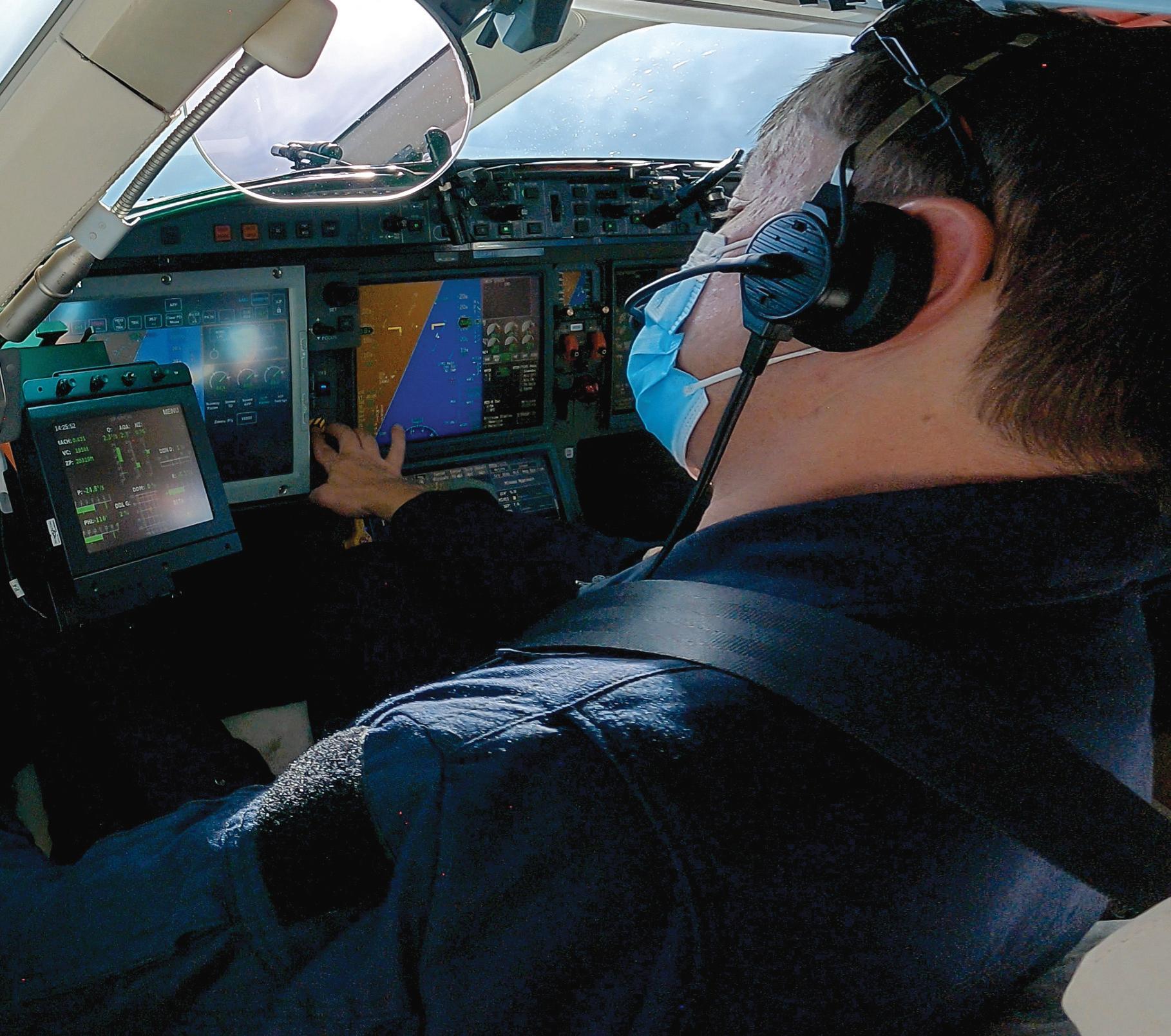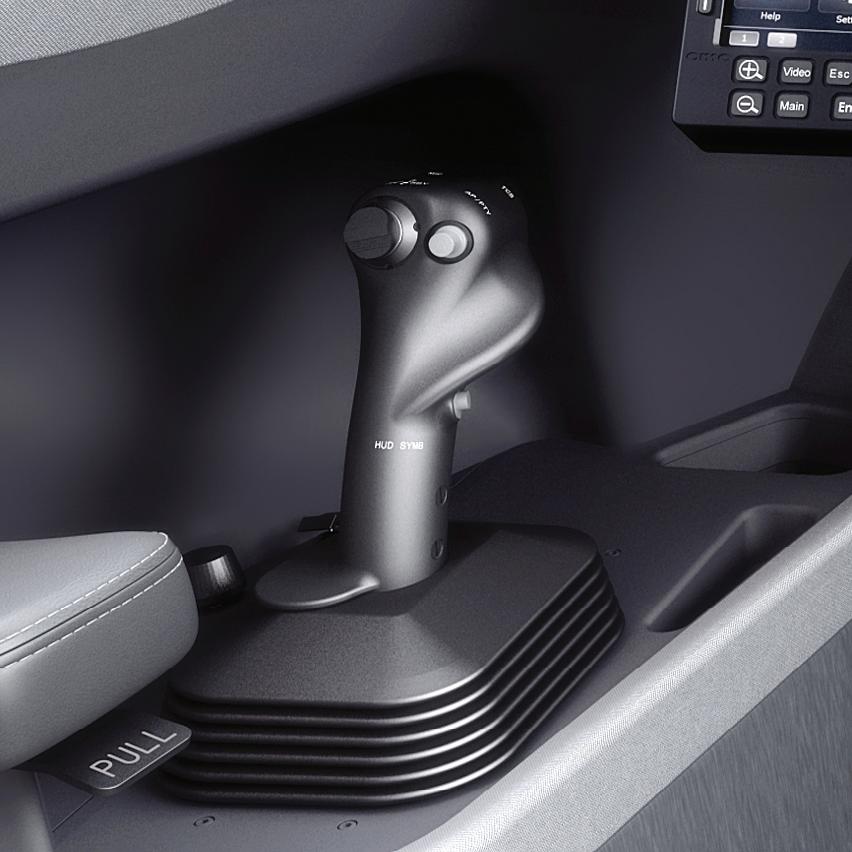
4 minute read
Fly-by-Wire & Smart Throttle: The Benefits to BizAv
Fly-by-Wire technology replaces the conventional manual linkages that connect cockpit controls and flight control surfaces with electronic cables. Mario Pierobon explores the technology offered aboard today’s Dassault Falcon business jets…
According to Dassault Aviation, there are some significant reasons for having Flyby-Wire (FBW) systems on business aircraft. Among them is the fact that they link flight control surfaces to control sidesticks on the flight deck by means of electrical signals, rather than mechanical connections.
Advertisement
Electronic cables transmit the signals generated by the pilot’s sidestick to flight control computers. “These then interpret the best combination of control inputs, and send the signals to actuators that move the control surfaces,” highlights Vadim Feldzer, Falcon Global Communications for Dassault Aviation.
“FBW saves weight and improves reliability – it makes handling more precise,” he continues. “It reduces pilot workload, and, most critically, provides flight envelope protections that ensure a safer, smoother flight.”
As a business jet manufacturer, Dassault designs and builds its own FBW system. “Our latest aircraft have what we refer to as the Digital Flight Control System (DFCS), an advanced form of fly-by-wire system,” Feldzer explains.
“It is the belief of Dassault’s engineers that maintaining full control of the design and production process is the best way to integrate fast-evolving FBW technology into the design of our aircraft.”
Dassault seeks to provide the pilot with more precise flight controls, and easier hand-flying. For example, Dassault’s system trims control pressures automatically as speed changes. “By reducing pilot


workload, pilots can focus on the big picture of managing a flight, and safety is therefore enhanced,” Feldzer notes.
“Moreover, the FBW system provides protections (‘guardrails’) to prevent stalls or over-speeds, or avoid overstressing the airframe. And it provides a smoother ride during turbulence, whether you’re flying with the autopilot, or by hand.”
Yet with the operational benefits, FBW does require some precautions, too; precautions that Dassault has been careful to take.
“Because the system is digital, as opposed to mechanical, there are multiple backups,” Feldzer highlights. “Three primary computers are backed-up by three secondary computers – which are, in turn, backed up by an analogue system.” New Features
When it enters the market in 2022, the Falcon 6X will feature an advanced FBW system which controls all flight controls aboard the jet – “not only the primary controls, as aboard the Falcon 7X and 8X, but secondary controls like flaps and slats, as well,” Feldzer clarifies.
“The Falcon 6X’s DFCS will also control nose wheel steering, permitting safer runway handling in strong crosswinds, and in wet runway conditions.”
In February 2021, the company unveiled a series of additional advanced DFCS capabilities. These, Dassault says, could further enhance the flight performance and safety of Falcon business jets.
“Flight tested on a Falcon 7X testbed aircraft, these new advances include a smart mono-throttle

that permits power on all three engines to be controlled with a single lever -a breakthrough derived from the mono-throttle on the twin-engine Rafale fighter jet.
“Additional advancements include an upset recovery mode that can return the aircraft to straight and level flight in the event of a wake turbulence upset, or other loss-of-control scenario, as well as a terrain collision protection system that calculates trajectory and automatically commands a recovery if terrain collision is imminent.”
Smart Throttle
According to Dassault, the first benefit of having a Smart Throttle compared to more traditional FBW systems is to simplify power management on a multiengine aircraft.
“One throttle can control two-engines, as on the new Falcon 10X, or even three engines as Dassault has demonstrated with the Falcon 7X serving as the testbed for the system”, Feldzer says.
“The Smart Throttle can set hard- and soft-stops into the throttle assembly for maximum climb power, meaning pilots spend less time monitoring temperature limits and fine-tuning power settings.
“It can automate a response to an engine failure when integrated with the DFCS, and it also performs the function of a conventional autothrottle, automatically adjusting power to maintain a desired speed,” he adds.
Just as DFCS works by interposing a computer between sidestick and flight controls, the Smart Throttle interposes a computer between power lever and engines, Dassault says. If an engine were to fail, the system could adjust power on the operating engine and signal the DFCS to compensate for lateral control, Feldzer explains.
Moreover, the Smart Throttle can help with regard to upset prevention and recovery. “The Smart Throttle is quite intuitive. After all, it is intended to simplify operations,” Feldzer continues. Training would be similar to a conventionally-equipped aircraft but made easier.
“The Smart Throttle is at its smartest in an upset recovery, automatically reducing power to prevent an over-speed, and increasing power as the aircraft returns to level flight,” he concludes. “For this reason, the Smart Throttle will be a required component of the Falcon 10X’s automatic recovery mode.” More information from www.dassaultfalcon.com. ❚
MARIO PIEROBON
is a safety management consultant covering both fixed- and rotary-wing operations. He writes broadly on safety-related topics, with expertise of air operations and crew training safety regulations. As a consultant, Mario helps companies improve procedures. His knowledge of safety is valued by several industry-leading publications, including AvBuyer.
MAKE MORE INFORMED FLIGHT DEPARTMENT MANAGEMENT DECISIONS with AvBUYER.com










